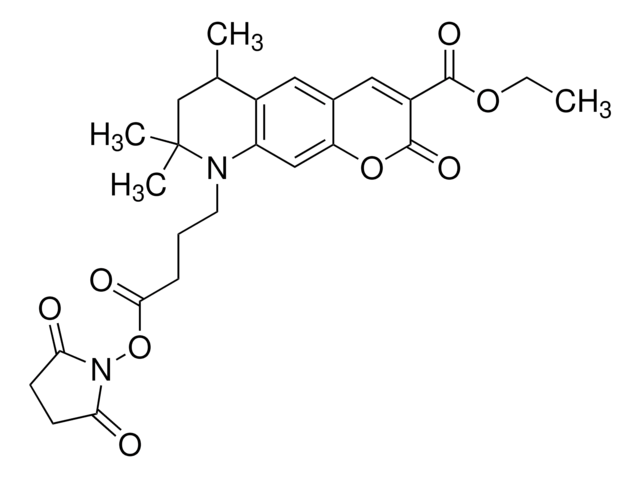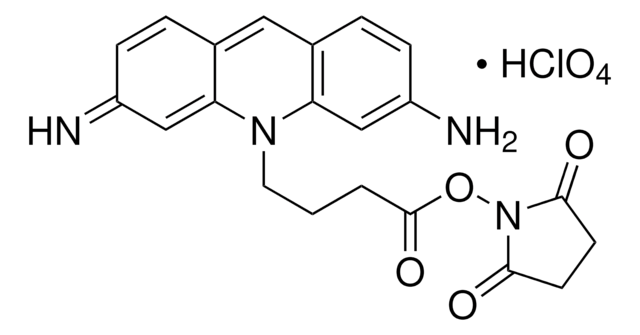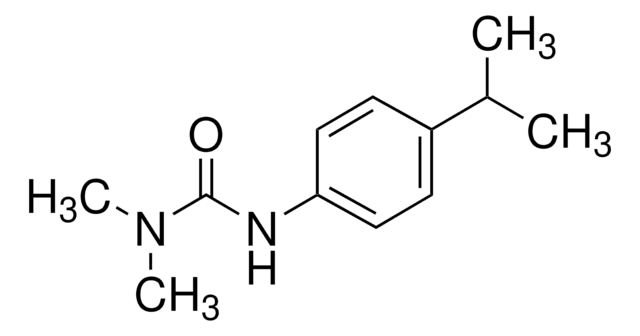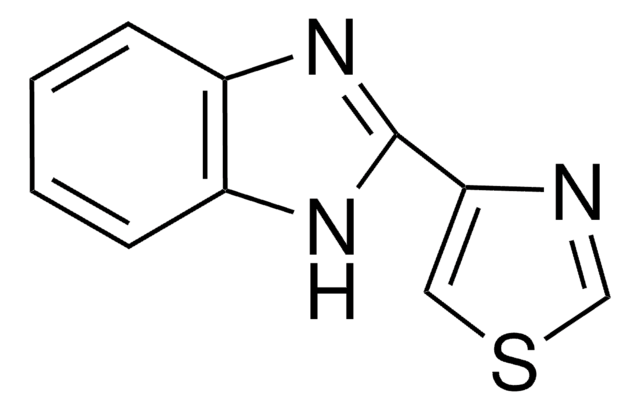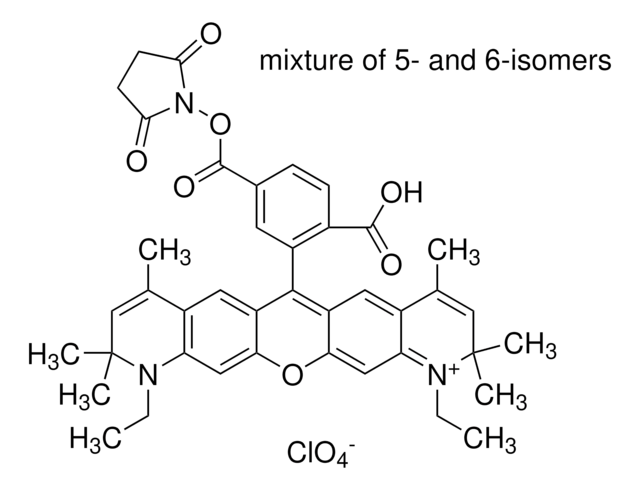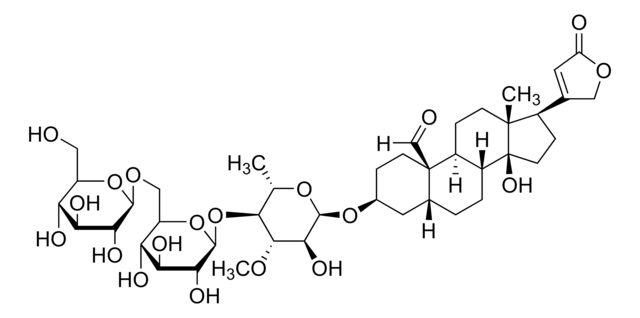56759
Atto 425
BioReagent, suitable for fluorescence
About This Item
Produits recommandés
Gamme de produits
BioReagent
Essai
≥90% (HPLC)
Forme
(Report result)
Fabricant/nom de marque
ATTO-TEC GmbH
Transmittance
254 nm, >90%
425 nm, >90%
Fluorescence
λex 440 nm; λem 484 nm
λ
in PBS, pH 7.4
in ethanol (with 0.1% trifluoroacetic acid)
Absorption UV
λ: 423-429 nm Amax
Adéquation
suitable for fluorescence
Conditions d'expédition
wet ice
Température de stockage
−20°C
Chaîne SMILES
CCOC(=O)C1=Cc2cc3C(C)CC(C)(C)N(CCCC(O)=O)c3cc2OC1=O
InChI
1S/C22H27NO6/c1-5-28-20(26)16-10-14-9-15-13(2)12-22(3,4)23(8-6-7-19(24)25)17(15)11-18(14)29-21(16)27/h9-11,13H,5-8,12H2,1-4H3,(H,24,25)
Clé InChI
WNDDWSAHNYBXKY-UHFFFAOYSA-N
Application
Informations légales
Code de la classe de stockage
11 - Combustible Solids
Point d'éclair (°F)
Not applicable
Point d'éclair (°C)
Not applicable
Faites votre choix parmi les versions les plus récentes :
Déjà en possession de ce produit ?
Retrouvez la documentation relative aux produits que vous avez récemment achetés dans la Bibliothèque de documents.
Les clients ont également consulté
Notre équipe de scientifiques dispose d'une expérience dans tous les secteurs de la recherche, notamment en sciences de la vie, science des matériaux, synthèse chimique, chromatographie, analyse et dans de nombreux autres domaines..
Contacter notre Service technique